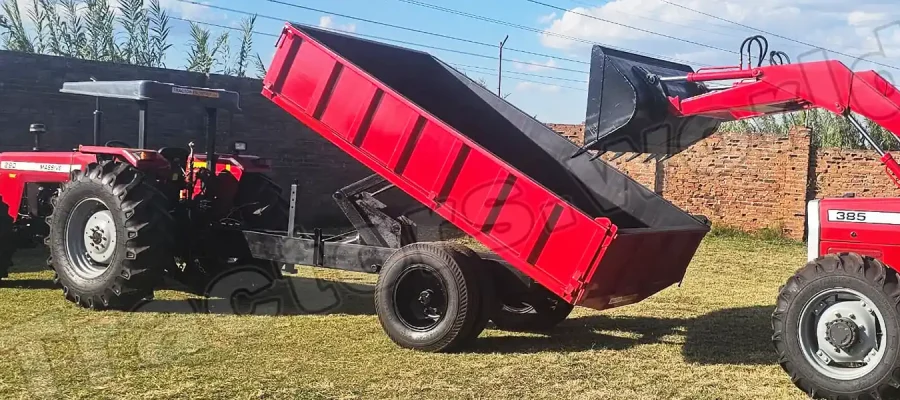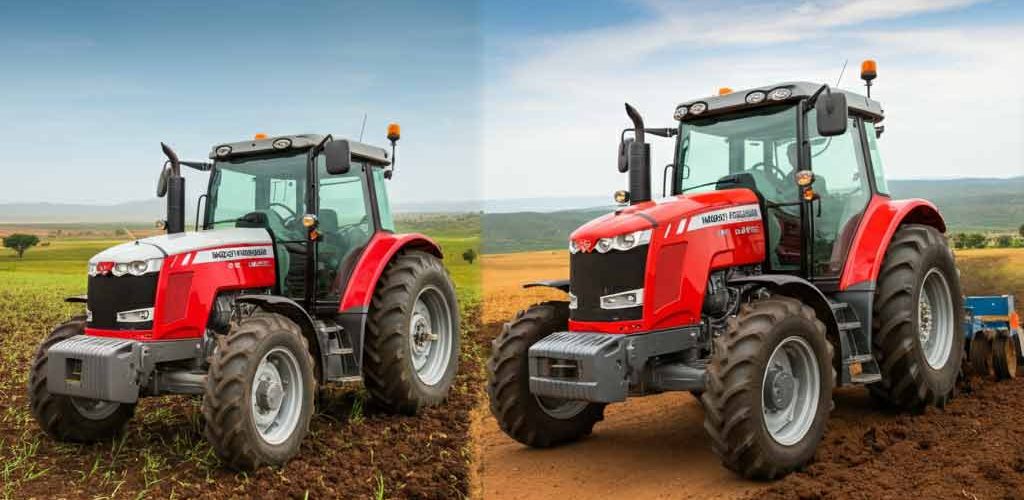
- December 8, 2025
- By: Massey Ferguson Zambia
- in: Agricultural Machinery, Farm Equipment, Farm Tractors, News

Choosing the right tractor is one of the most important decisions a Zambian farmer can make. Your choice impacts everything from fuel costs to productivity in the field. A key consideration is the drive system: should you opt for a 2-wheel drive (2WD) or a 4-wheel drive (4WD) model? Each has distinct advantages suited to different farming needs across Zambia’s diverse agricultural landscape.
Two-wheel drive tractors, where power is sent only to the rear wheels, have been the backbone of Zambian agriculture for decades. Their simple, proven design offers several key benefits.
Lower Cost: 2WD tractors are generally more affordable to purchase and maintain due to their simpler mechanical design. This makes them an accessible entry point for small-scale farmers or those with a limited budget.
Fuel Efficiency: With fewer moving parts in the drivetrain, 2WD models are often lighter and more fuel-efficient during lighter tasks like mowing, spraying, or transporting goods on flat ground.
Manoeuvrability: They typically have a tighter turning radius, making them ideal for navigating smaller fields, orchards, and tight spaces.
However, their limitations become clear when the terrain gets tough. On wet, muddy, or hilly ground, 2WD tractors can struggle with traction, leading to wheel slippage and reduced pulling power.
Four-wheel drive tractors deliver power to all four wheels, either full-time or on-demand. This provides a significant boost in performance, especially under challenging conditions.
Superior Traction: By distributing power across all wheels, 4WD tractors offer excellent grip on slippery surfaces, loose soil, and steep inclines. This is a major benefit for farmers working in Zambia’s hilly regions or during the rainy season.
Increased Pulling Power: The enhanced traction translates directly into greater pulling force. This allows 4WD tractors to handle larger, heavier implements for tasks like deep ploughing and subsoiling, improving efficiency and productivity.
Reduced Soil Compaction: Although they are heavier, 4WD tractors experience less wheel slippage. This can help reduce soil compaction, which is crucial for maintaining soil health and maximizing crop yields.
The main drawbacks are the higher initial purchase price and potentially higher fuel consumption, particularly when the 4WD system is engaged.
The best choice depends entirely on your farm’s specific needs.
Choose a 2WD tractor if your farm is mostly flat, your tasks are relatively light (e.g., planting, spraying, light transport), and your budget is a primary concern.
Choose a 4WD tractor if you farm on hilly terrain, deal with wet or muddy conditions, or need to use heavy, power-intensive implements. The investment pays off through increased productivity and operational reliability.
At Tractors Zambia, we understand the unique challenges and opportunities of farming in our country. We offer a comprehensive range of tractors to suit every need and budget.

Post a Comment